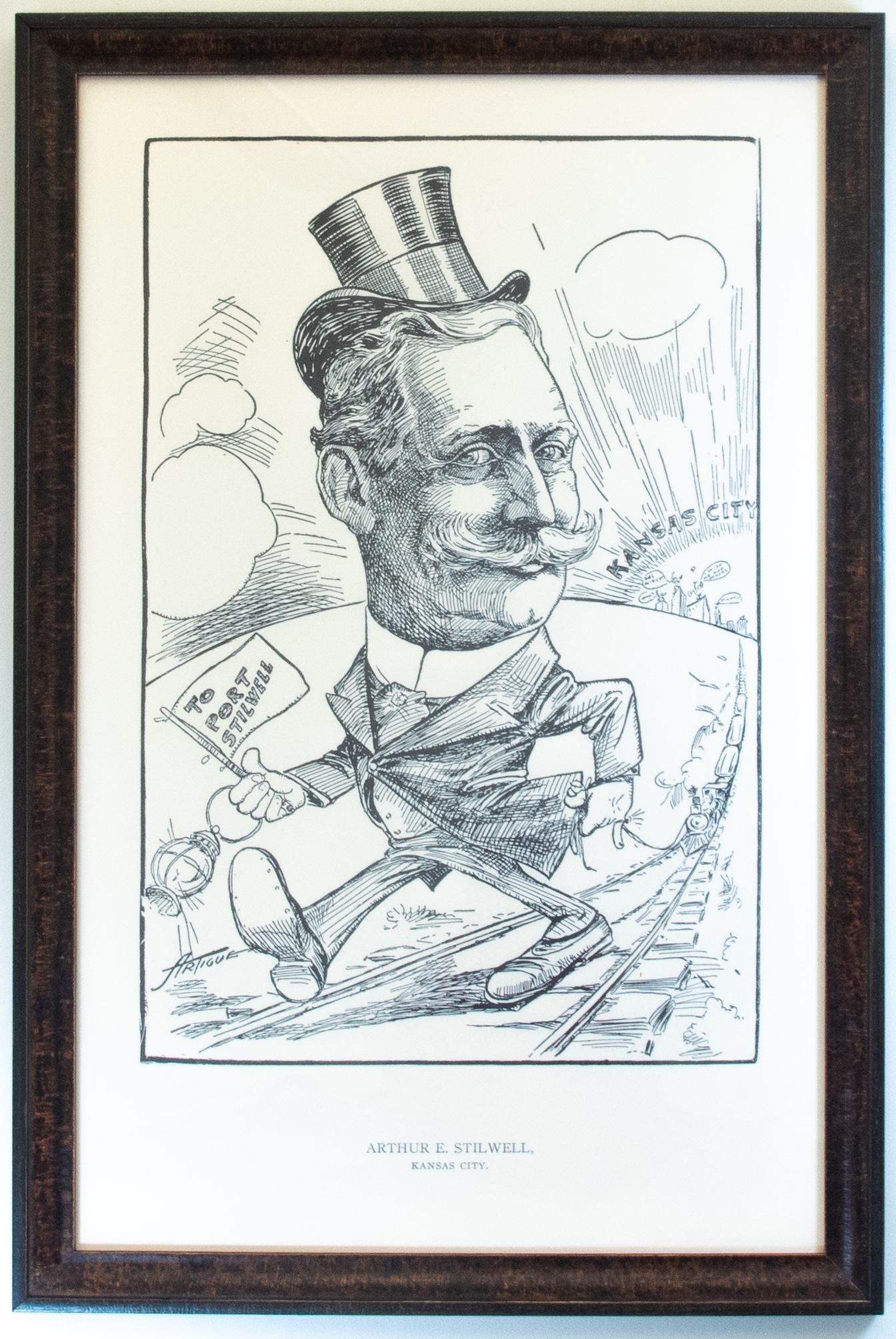Arthur Stilwell
Arthur E. Stilwell was a prominent real estate and railroad developer in the late 19th and early 20th centuries. With an understanding that railroads increased surrounding property values, Stilwell moved to Kansas City in 1887 to establish a real estate company in tandem with the southbound Pittsburg & Gulf railway. In 1900, Stilwell announced plans for a second railroad to go from Kansas City to Topolobampo, Mexico, a Pacific seaport that would connect the Midwest to freight from the South, the East, and vice versa. The artist, Pierre E. Artigue, depicts Stilwell in this pen and ink illustration holding a lantern and flag that reads "To Port Stilwell" in one hand while touting a train leaving Kansas City in the distance in the other. The real estate and railroad magnate purportedly renamed the Topolobampo Port to Port Stilwell without consulting with the Mexican government; an egoic action that explains Stilwell's literal big head in the illustration. Text bubbles from the city represent the mixed emotions had about Stilwell and his operations. Stilwell himself takes up the majority of this drawing with an enlarged realistically rendered head and smaller cartoonish body. The artist was sure to include indications of Stilwell's wealth such as his top hat, ascot jewel, and a dazzling ring on his little finger. Artigue was a cartoonist that lived in Kansas City and worked for the Kansas City Star around 1902. He presumably wrote the accompanying didactic for this cartoon, which describes Stilwell with biting sarcasm and wit.

